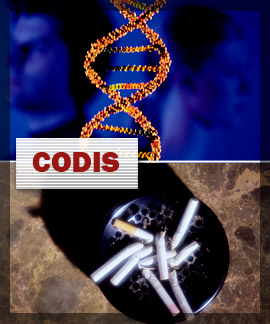Archival Notice
This is an archive page that is no longer being updated. It may contain outdated information and links may no longer function as originally intended.
Home | Glossary | Resources | Help | Contact Us | Course Map
Introduction
DNA profiles from "no suspect" cases are uploaded to the Combined DNA Indexing System (CODIS) database and routinely searched against local, state, and federal databases. The term "cold" in relation to a DNA case typically means the case was in an unsolved status when the evidence DNA profile was entered into CODIS. "Hit" refers to a match between a person's DNA profile obtained in one case to that obtained in another case. More typically, the "hit" refers to a match between a DNA profile obtained from a crime scene and a DNA profile obtained from a convicted person.
In this topic you will learn about cold hits and cold cases.
|
Hit |
|
Monoacrylamide is a known neurotoxin and must be handled with care. |
Additional Online Courses
- What Every First Responding Officer Should Know About DNA Evidence
- Collecting DNA Evidence at Property Crime Scenes
- DNA – A Prosecutor’s Practice Notebook
- Crime Scene and DNA Basics
- Laboratory Safety Programs
- DNA Amplification
- Population Genetics and Statistics
- Non-STR DNA Markers: SNPs, Y-STRs, LCN and mtDNA
- Firearms Examiner Training
- Forensic DNA Education for Law Enforcement Decisionmakers
- What Every Investigator and Evidence Technician Should Know About DNA Evidence
- Principles of Forensic DNA for Officers of the Court
- Law 101: Legal Guide for the Forensic Expert
- Laboratory Orientation and Testing of Body Fluids and Tissues
- DNA Extraction and Quantitation
- STR Data Analysis and Interpretation
- Communication Skills, Report Writing, and Courtroom Testimony
- Español for Law Enforcement
- Amplified DNA Product Separation for Forensic Analysts


